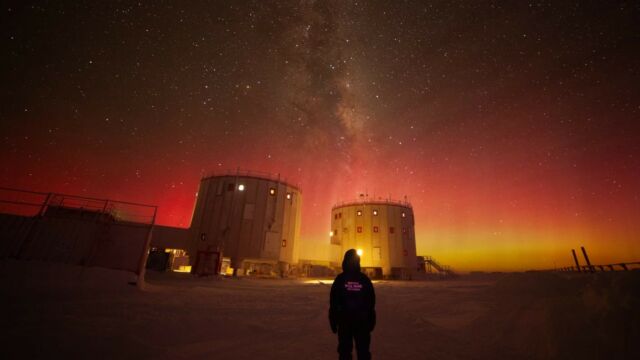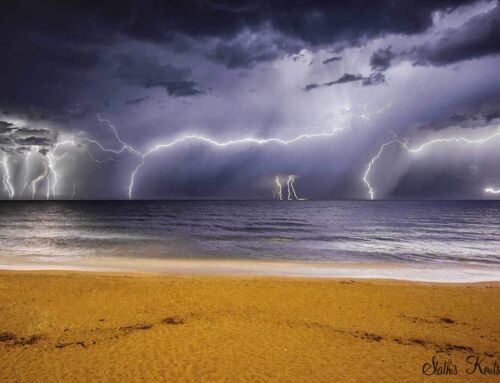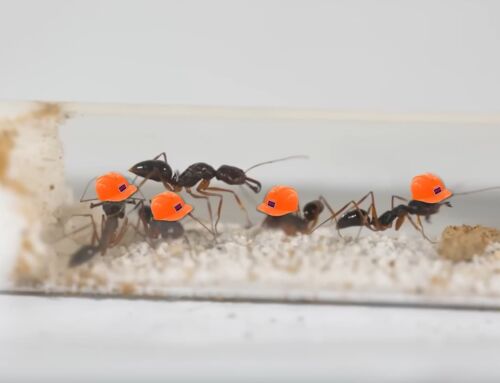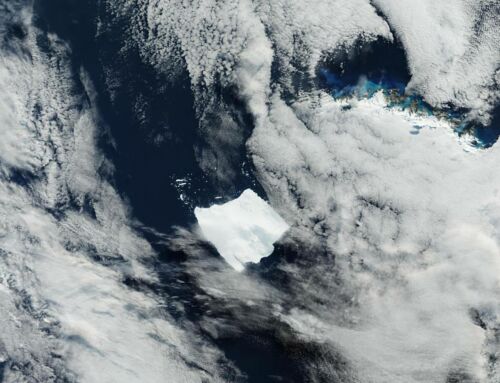 Aurora Australis over Antarctica. Credit ESA/IPEV/PNRA-J. Studer
Aurora Australis over Antarctica. Credit ESA/IPEV/PNRA-J. Studer
A dazzling display of the Aurora Australis (southern lights) illuminates the skies above the Concordia research station in Antarctica.
Yellow hues shimmer near the horizon, while vibrant red lights reach high into the polar sky.
These stunning colors are created when charged particles from the Sun collide with gases in Earth’s atmosphere, guided by the planet’s magnetic field to the poles. Green auroras, the most common, form between 100 and 200 km altitude, where oxygen atoms are abundant and require less energy to emit light.
Beneath this natural wonder stands Jessica Studer, a medical doctor sponsored by ESA for Concordia’s 2024 winter-over mission. Jessica spent months in complete isolation with a small team during the Antarctic winter, enduring four months of darkness and temperatures as low as –85°C.
Concordia, one of the most remote places on Earth, is 600 km from its nearest neighbors at Vostok station—making it even more isolated than the International Space Station. The station serves as a unique hub for research in astronomy, glaciology, and human physiology, helping scientists understand how humans adapt to extreme cold, darkness, and isolation—conditions similar to those in space.
source ESA





Leave A Comment